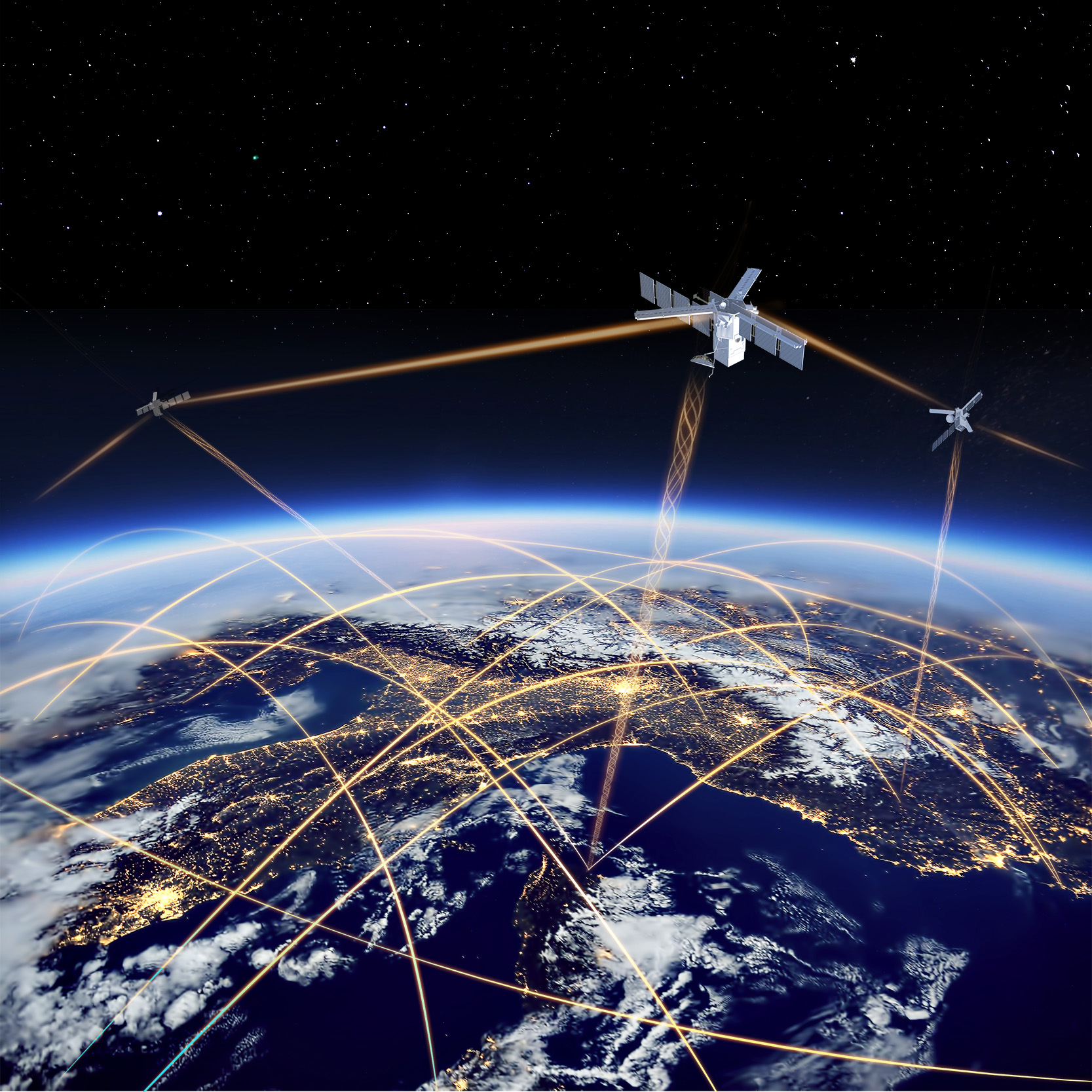
Raytheon is tackling the slow pace and high cost of space-systems procurement with evolvable architectures, and the application of industry-proven processes like digital engineering and continuous delivery. (Illustration by Raytheon.)
The proliferation of adversarial challenges and opportunities to retain domain dominance for the U.S. and its allies is driving demand to modernize the national security space enterprise. Today’s national critical missions are spurred by the need to quickly and efficiently develop and integrate new capabilities to address high value targets such as hypersonic cruise missiles. Other missions are focused on incrementally adding modern capabilities to meet dynamic threats from electronic warfare. And then there are missions that require both and the ability to manage data across heterogeneous proliferated constellations.
All of the above address complex systems, but it’s the third category – ground control systems – where the operational community works closest with industry to execute missions against the most dynamic challenges. Not only does mission execution have to happen in real-time using assets hundreds of miles above the Earth’s surface, but it must be extraordinarily reliable – downtime is not an option.

Karen Casey is technical director of Digital & Mission Solutions at Raytheon, an RTX business.
“Key DoD leaders say threats are changing faster than we’ve ever seen,” said Karen Casey, technical director of Digital & Mission Solutions (DMS) at Raytheon, an RTX business. “So, the ground systems that we build must be highly malleable and elastic. For the operator on the keyboard, the data and information must be relevant, accurate and easily understandable.”
When you think about spacecraft ground control operators, it is easy to imagine what is depicted in movies, people sitting in control centers, rows of workstations and lots of map displays. Those systems weren’t easily modified for new missions, and even up to recent times neither have many ground-control systems used for today’s military and intelligence missions in space. It hasn’t been possible until recently, for example, to plug and play a new satellite-scheduling algorithm, introduce a new data processing approach, or add a new data interface. The process has traditionally been time and resource-intensive with a very low-risk tolerance, systems were exquisite and customized for the mission requirements.
Today’s challenges require modernization of the national security space enterprise, and the ground system has to enable the changes. None of the existing on-orbit technologies that often dominate headlines will work without advanced ground systems capable of collecting, processing, and securely transmitting usable data to decisionmakers. Through the development of modular, evolvable architectures, and the application of industry-proven processes like digital engineering and continuous delivery of capability – with cybersecurity embedded throughout – Raytheon is tackling the slow pace and high cost of space-systems procurement.
And doing so in a measured and balanced way by prioritizing commercial capabilities that create near-term opportunities for the national security space enterprise to improve mission effectiveness.
“We have programs that were acquired under a very different model many years ago,” said Casey. “Technology changes very quickly, and we work to figure out the right way to inject innovation in-bounds of our scope in a rapid manner.”
Raytheon’s ground-control segment is an IT-like business, where technologies change by the minute. Everyone operating in space today wants to go fast, push the envelope and advance their missions.
However, a balance must be struck between this desire for speed and properly conducting national security missions with extraordinarily complex space capabilities. They must take into account many other factors such as reliability, security, operational performance, and maintainability. Enterprise ground systems must be able to orchestrate modern space constellations and evolve to incorporate new architectural capabilities by design.
Then there’s cybersecurity. Raytheon’s ground-control systems are being built to be cyber-defensible. That means they’re able to fight through an attack and have built-in layers of protection that can recognize evolving threats.

Raytheon builds ground systems that control some of the United States’ most important national security space missions such as missile warning and GPS. (Illustration by Raytheon.)
Clearly, there are many considerations to be made other than just delivering a rapid, new capability.
“There are some awesome things happening on our programs today like digital engineering and the use of DevSecOps to rapidly deploy technology and mission capabilities into operations,” said Casey. “But I do want to make sure that when we go fast it’s for a reason, it must be aligned to the mission.
“Particularly on the ground, we have a great opportunity to affect the mission by maximizing space resources, an evolvable ground system can affect operational results faster than adding new space resources. Striking a balance between adding new technology on orbit or on the ground is critical to understanding what we can do differently to improve operator decision making.”
From the ground up
Raytheon builds ground systems that control some of the United States’ most important national security space missions. These include missile warning, tracking, custody, and defense; position, navigation, and timing through the Global Positioning System; and space situational awareness to track and characterize objects orbiting the Earth. Raytheon excels at developing and deploying mission management systems that are used to lay out a daily schedule of events for how particular instruments or sensors will be employed.
“Mission management alone can be technically complex,” said Casey. “You’re dealing with outages, calibrations, pointing controls, line of sight and comms to a ground station, and space sensor capabilities that can sometimes conflict. There’s also what the operator wants to do with a national-critical mission that day, which can be incredibly dynamic.”
This gets into some of the more critical aspects of ground control, especially the speed and the responsiveness of those controls. That’s the purview of telemetry, tracking, and control, known as TT&C, which are the zeros and ones that are transmitted as command to the vehicle and the telemetry that comes back to the ground stations that is processed into an image or something that’s being tracked.
Another aspect is data processing – the decision logic and the algorithms that convert information into actionable decisions. For example, is a bright flash detected somewhere on the planet a volcano erupting, a forest fire, or something more interesting from a national defense perspective?
“We have programs where the operator has to respond in seconds, maybe even less than seconds, which means our data processing has to operate in seconds or milliseconds,” said Casey. “We include the automation and real-time decision-making so that they can trust what they’re getting and that they’re getting what they need fast enough.”
Operators perform missions
Raytheon has responsibility for mission planning, data processing, command and control. How the company handles each of these areas are all done in the service of the operator, the person sitting on a console making a decision about what to do with these national critical assets – how to command them, control them, plan them, and to respond to events.
“We don’t want our operators to have to be mathematicians and understand the combinatorial complexity of the capabilities of the sensors and the vehicles,” said Casey. “We want them to be able to do their jobs.”
Raytheon understands the seriousness and magnitude of the space domain, how to solve the hardest enterprise problems, and manages data and decision-making at scale. The company is an industry leader, meeting government needs and also anticipating them. And Raytheon partners with best of breed in the world, bringing them into the space enterprise so missions can be executed smarter, faster, and at the highest levels.























